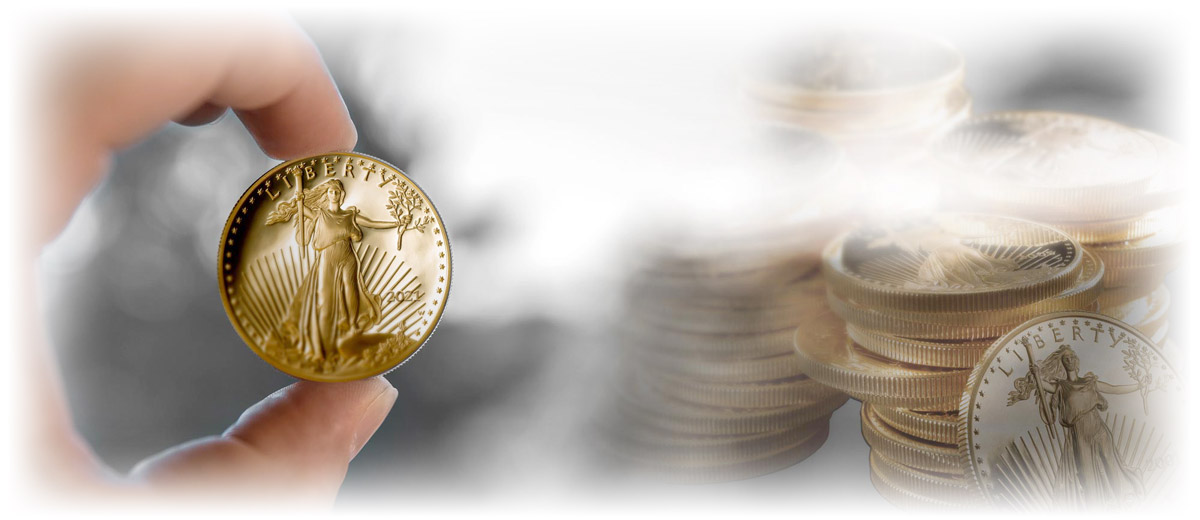Click here to get this article in PDF
The holidays are getting closer, and you’ve decided (perhaps after reading last week’s blog) that gold may be the perfect gift for your loved ones. So now it’s time to dig just a little deeper and examine some of your many options when it comes to buying gold.
For example, our Account Executives at U.S. Money Reserve are constantly asked about the differences between bullion and proof coins. Which is better for a portfolio? Is one better than the other?
Right off the bat, I’ll answer that second question: Proof coins are not “better” than bullion coins, nor are bullion coins better than proof coins. Each type of coin has its own strengths when it comes to diversification, and each can hold a unique place in your portfolio.
As I’ve said many times before, I believe that the best decision you can make is an educated decision. So with that in mind, let’s examine some of the similarities and differences between bullion and proof coins.
Proof coins are similar to bullion coins but feature several important differences.
Like bullion coins, proof coins often feature legal-tender denominations, meaning each coin’s weight and purity are guaranteed by the coin’s issuing government. They also often feature the same design as bullion coins.

“Bullion” is a term we use to refer to any precious metal coin struck with a standard finish. “Proof” coins undergo a specialized minting process that takes time, skill, and the latest in minting technology.
Proof coins start out as highly polished planchets, or blanks, which are then hand-loaded into a coin press before being struck multiple times with dies that have also undergone a special treatment. The combination of these elements results in a high level of detail, with frosted images and mirror-like backgrounds.
Personally, I love the extra level of artistry that proof coins exhibit. Even more, I love the impressive levels of profit potential and diversification that proof coins can provide.
Proof coins’ relative scarcity impacts their demand and profit potential.
With all the work and time that go into making proof coins, the U.S. Mint and mints around the world almost always strike proof coins in smaller mintages than their bullion counterparts. Take the 1998 Gold Eagle, for example: While the U.S. Mint struck nearly 1.5 million bullion American Gold Eagle coins, the Proof Gold Eagles numbered just 26,000. That’s around 57 bullion coins per each proof coin.
This relative scarcity impacts proof coins’ profit potential. Bullion coins’ potential is typically tied exclusively to the weight of their precious metal content. But since proof coins are also prized for their scarcity, they can have additional insulation from spot price variations as well as greater profit potential.
Before I make any significant purchase, I like to consider what it will do for me in the long run. Proof coins have seen substantial gains over the long run, making them a viable option for any portfolio.
Both bullion and proof coins make fine additions to any portfolio.
Financial advisors often point to diversification as one of the key ways we can lower overall risk exposure in our portfolios. Having both proof and bullion coins allows us to not only diversify with precious metals, but to also diversify within that asset class by owning precious metals that react slightly differently to different factors.
If you’re considering buying gold for yourself, it’s also good to know that both bullion and proof Gold Eagle coins struck by the U.S. Mint are eligible for inclusion in a self-directed precious metals IRA, allowing you to experience the tax benefits of an IRA while diversifying your retirement portfolio with the added profit potential of both types of gold coins.
When it comes to selecting bullion or proof gold, the choice, as always, is up to you. But if you’re asking my personal opinion, my honest response is: “Why not both?”
The post Proof Coins vs. Bullion Coins: Is One Better Than the Other? appeared first on U.S. Money Reserve.
